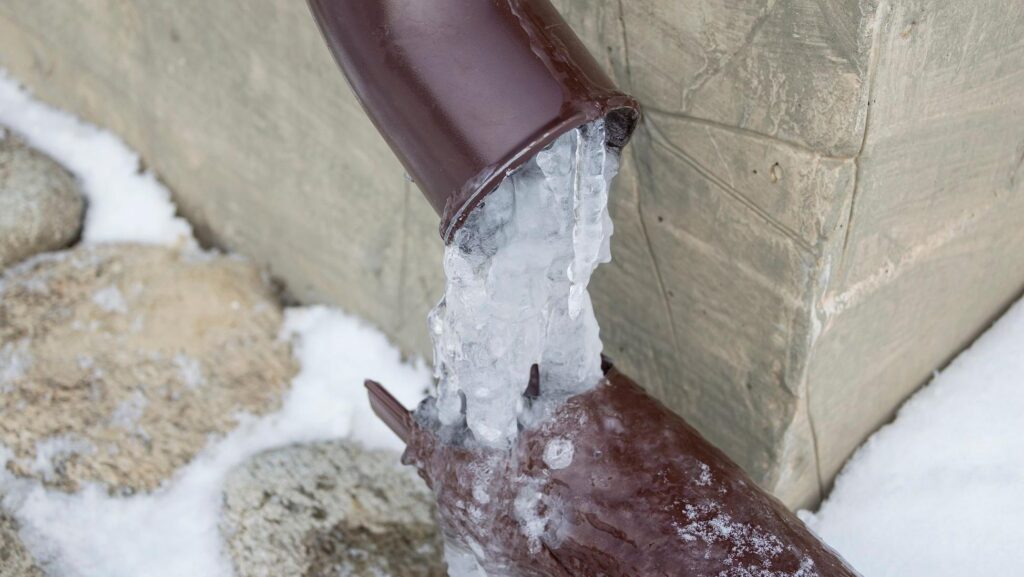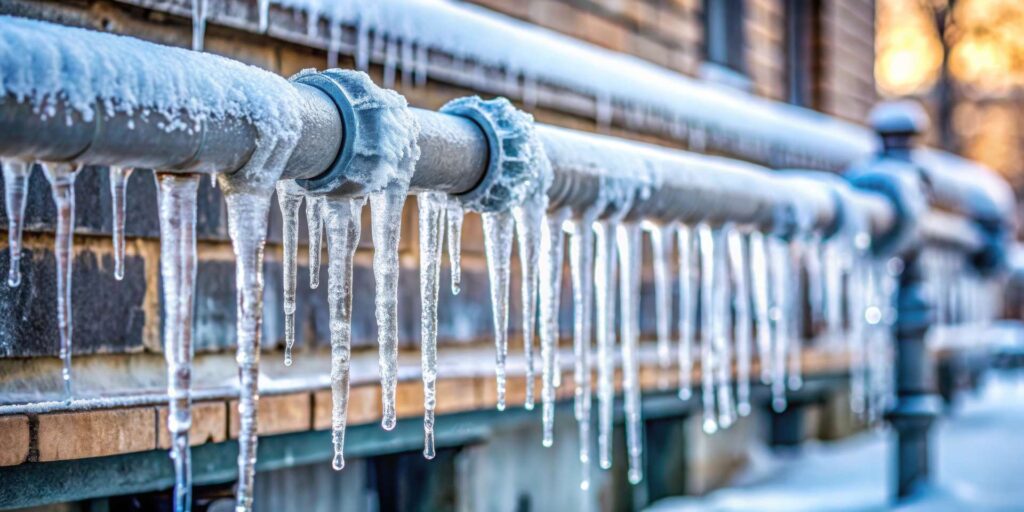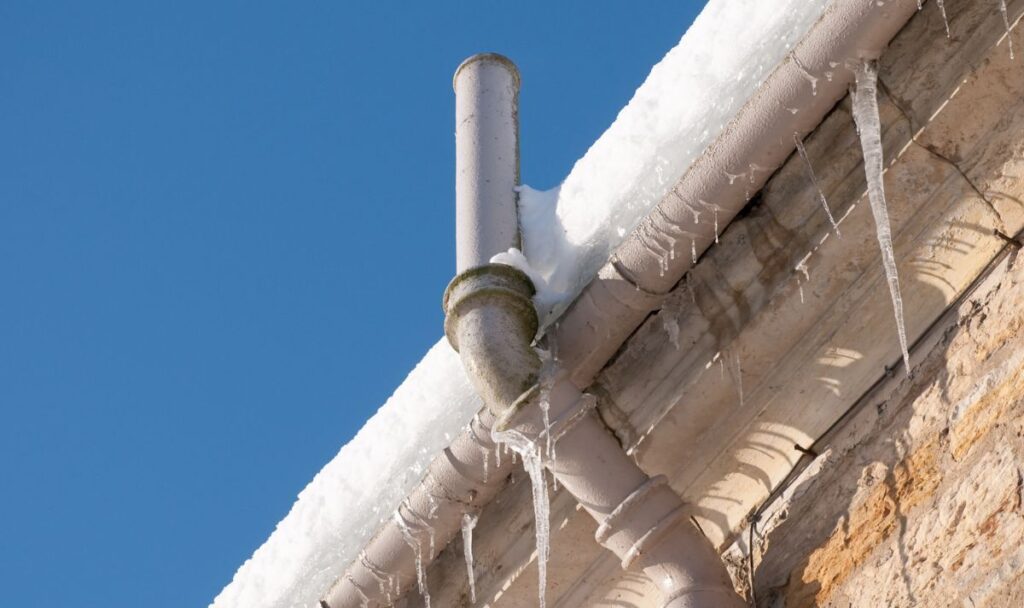Winter can be beautiful, with frosty mornings and the occasional snowfall turning gardens and rooftops into postcard-perfect scenes. But behind the charm lies a serious risk for homeowners: frozen pipes. In this Article, we are going to suggest you, How To Prevent Frozen Pipes During Winter
When temperatures dip below zero, the water in your pipes can freeze, expand, and create immense pressure. The result? Cracked or burst pipes that lead to flooding, costly damage, and days of stress while waiting for emergency plumbers. In fact, insurers report that frozen and burst pipes cost UK homeowners millions of pounds each year.
The good news is that frozen pipes are largely preventable. With the right knowledge and timely action, you can keep your home safe and warm throughout the coldest months. In this comprehensive guide, we’ll explore why pipes freeze, the most at-risk areas in your home, and practical steps you can take to prevent frozen pipes during winter.
Why Do Pipes Freeze?
Pipes freeze when the temperature around them falls below freezing (0°C), causing water inside to solidify. As water freezes, it expands by about 9%. That may not sound like much, but inside a sealed metal or plastic pipe, it creates enormous pressure that the pipe simply can’t handle.
Key Risk Factors:
Outdoor temperatures: Extended periods below freezing greatly increase risk.
Location of pipes: Pipes in unheated areas like lofts, basements, garages, and external walls are especially vulnerable.
Insufficient insulation: Unlagged or poorly insulated pipes lose heat quickly.
Low or stagnant water flow: Pipes that aren’t used regularly are more likely to freeze.
What Happens When Pipes Freeze?
The immediate concern is that water stops flowing to your taps, toilets, and heating system. But the real danger comes when the ice begins to thaw. As the frozen water melts, pressure changes can cause already-weakened pipes to burst. A small crack can release hundreds of litres of water in just a few hours, flooding rooms and damaging walls, floors, and electrical systems.
In some cases, homeowners only discover frozen pipes once they’ve burst and caused a leak. That’s why prevention is always better than cure.
1. Insulate Your Pipes Properly
Pipe insulation (often called lagging) is the first and most effective line of defence against freezing. It’s affordable, widely available at DIY stores, and easy to install.
Tips for Insulating Pipes:
Use foam pipe sleeves that fit snugly around exposed pipes.
Focus on loft spaces, basements, garages, utility rooms, and outdoor pipework.
Don’t forget hot water cylinders and tanks—lagging them keeps water warmer for longer.
Pay special attention to bends, joints, and fittings, which are often overlooked but just as vulnerable.
Even a thin layer of insulation can make the difference between a frozen pipe and a free-flowing system.
2. Keep the Heating On
Many people switch off the heating to save on bills when they’re away from home, but this is one of the biggest mistakes you can make during freezing weather.
Best Practices:
Keep your central heating running at a low but consistent temperature, even overnight.
If you’re away, set your thermostat to around 12–15°C to stop pipes from freezing.
Programmable thermostats and smart heating systems can help maintain a steady temperature without wasting energy.
This small expense can save you thousands in potential repairs.
3. Seal Draughts and Cold Spots
Pipes don’t freeze in isolation—they freeze because the surrounding air is cold. Eliminating draughts can make a big difference.
How to Stop Cold Air Reaching Pipes:
Seal gaps around windows, doors, and pipe entry points with draught excluders or sealant.
Insulate loft hatches and garage doors to keep the cold out.
Install weatherproof covers over external vents where practical.
By reducing cold airflow, you protect your pipes and improve your home’s overall energy efficiency.
4. Protect Outdoor Taps and Hoses
Outdoor taps are among the most common sources of frozen pipe problems. If water remains in the pipes leading to outside taps, it can freeze quickly.
What to Do:
Disconnect garden hoses, drain them, and store indoors.
Fit an insulated tap cover over outdoor taps.
Isolate outdoor water supplies using the internal stopcock or isolation valve.
Consider installing a frost-proof outdoor tap for long-term protection.
A £5 tap cover could save you from a £500 plumbing bill.
5. Keep Water Flowing
Stagnant water freezes more easily than moving water. Encouraging a small, steady flow can prevent freezing.
Useful Trick:
On very cold nights, allow a trickle of water to run from a tap connected to vulnerable pipes (for example, one on an external wall). The movement helps prevent ice from forming.
While this does use a small amount of water, it’s much cheaper than repairing water damage.

6. Check Your Loft and Attic
The loft is one of the coldest parts of a house in winter, making it a prime location for frozen pipes.
Steps to Take:
Insulate loft water tanks with a jacket or cover.
Ensure pipes running through the loft are lagged.
Avoid blocking ventilation completely (good airflow prevents damp), but make sure pipes are shielded from direct cold drafts.
A well-insulated loft keeps both your pipes and your heating bills in check.
7. Know Where Your Stopcock Is
If the worst happens and a pipe bursts, you’ll need to act fast. The stopcock (main water shut-off valve) is your lifeline in an emergency.
Action Plan:
Locate your stopcock (usually under the kitchen sink, in a cupboard, or near the front door).
Check it turns easily—stiff stopcocks may need servicing.
Make sure every household member knows where it is and how to use it.
Shutting off the water quickly can reduce the scale of damage by thousands of pounds.
8. Service Your Boiler and Heating System
Your heating system is vital for preventing frozen pipes. If your boiler breaks down in the middle of winter, the risk of frozen pipes skyrockets.
Maintenance Tips:
Have your boiler serviced annually by a Gas Safe registered engineer.
Bleed radiators regularly to keep heat flowing efficiently.
Top up heating system inhibitor fluid to prevent corrosion and sludge build-up.
Check pressure levels on your boiler and repressurise if necessary.
A reliable heating system not only keeps you warm but also keeps your plumbing safe.
9. Consider Smart Technology
Modern smart home devices can play a role in protecting your pipes.
Options:
Smart thermostats: Maintain consistent heating schedules even when you’re away.
Leak detection sensors: Installed near vulnerable pipes, these can alert you to drips or bursts before they cause major damage.
Smart water shut-off valves: Automatically cut the water supply if a leak is detected.
While an investment, these technologies add peace of mind and protection for your home.

10. Don’t Forget Holiday Preparations
Many homeowners return from a winter holiday to find a flooded home. If you’re planning to be away during the colder months, take precautions.
Checklist Before Leaving:
Leave heating on at a low, steady temperature.
Ask a neighbour or friend to check the house occasionally.
Turn off and drain outdoor taps.
Consider draining your system if you’ll be away for an extended period.
Preventing frozen pipes while you’re away is far less stressful than dealing with a burst pipe on your return.
Signs Your Pipes Might Be Frozen
Even with all precautions, it’s worth knowing how to spot the signs of frozen pipes early:
No water or reduced flow from taps
Frost visible on exposed pipes
Unusual noises in the plumbing system
Strange smells from drains or taps (caused by blockages from frozen water)
At the first sign of trouble, act quickly to prevent a full burst.
What to Do If a Pipe Freezes
If you suspect a frozen pipe, don’t panic—there are safe steps you can take.
Turn off the stopcock to prevent flooding if the pipe bursts.
Open taps connected to the frozen section—this helps relieve pressure.
Gently thaw the pipe using warm towels, a hairdryer, or a hot water bottle. Never use an open flame or blowtorch, as this is extremely dangerous.
Check for leaks once thawed. If you see cracks or dripping, call a plumber immediately.
Long-Term Prevention Strategies
For homeowners who want to invest in long-term protection:
Upgrade old pipes with modern, insulated materials.
Re-route vulnerable pipes away from external walls where possible.
Install secondary heating in unheated areas like garages and lofts.
Keep up with routine maintenance every autumn to prepare for winter.
Extra Tips for UK Homeowners
Homes in northern England, Scotland, and rural areas are more exposed to prolonged freezing spells—extra precautions may be needed.
London and southern England may see shorter cold snaps, but don’t underestimate sudden drops in temperature.
Older Victorian and Edwardian houses often have exposed pipework in lofts and extensions—inspect these areas carefully.
Conclusion
Frozen pipes are one of the most expensive winter disasters UK homeowners face, but the vast majority of cases are preventable. By insulating pipes, keeping heating on, sealing draughts, protecting outdoor taps, and preparing for holidays, you can dramatically reduce the risk. You can be aware of climate and weather from Met Office.
Remember: prevention costs only a fraction of what it takes to repair burst pipes and water damage. A little preparation each autumn can protect your home all winter long.









